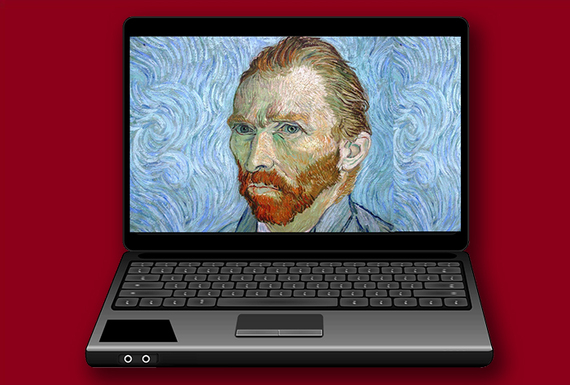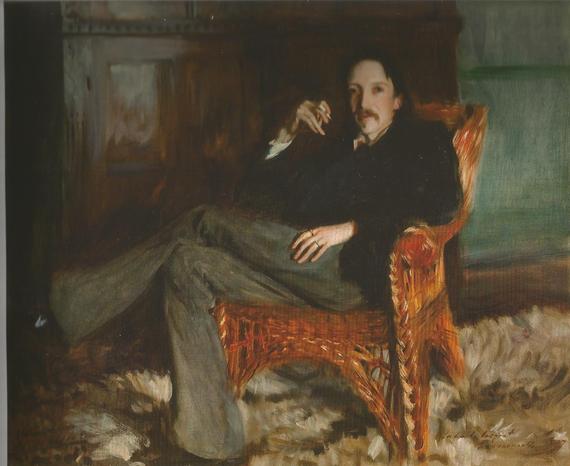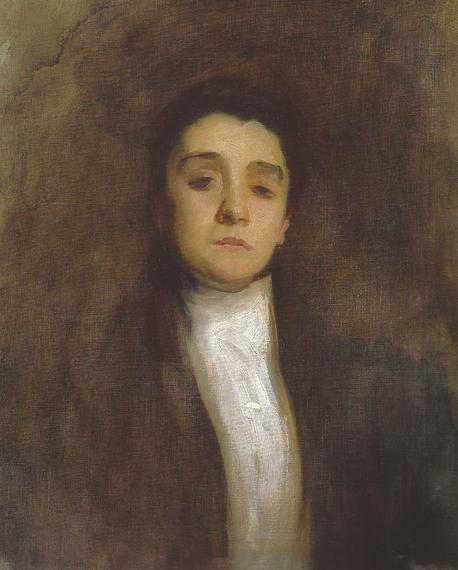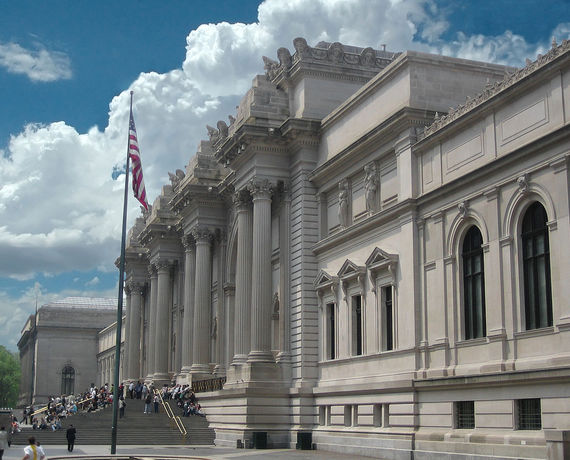Vincent van Gogh's famous self-portrait eyeing internet surfers from the screen of a PC
The spectacular exhibition of John Singer Sargent "Sargent Portraits of Artists and Friends" at the Metropolitan Museum of Art in New York following the successful run of the show at London's National Portrait Gallery has been an eye-opener for Londoners and New Yorkers alike, offering insights in the art of portrait making but also in the nature of the most valued commodity of our times, celebrity itself.
Celebrity is a social phenomenon in which an individual stands out of the crowd, thus getting noticed by members of small groups and in some cases attracting attention from society at large. Excluding the founders of religions, who are presumed to belong to metaphysical realms and apparently possess superhuman powers, the most important celebrities in the history of mankind are men and women whose thoughts and actions changed the course of the world. Isaac Newton, Galileo and Marie Curie from the field of science, William Shakespeare for transforming the English language, and Christopher Columbus for discovering America are but a few notable examples of absolute celebrity. Politicians too are very prominent on such lists, especially when they are responsible for reshaping or remapping the world. Foremost amongst them, Napoleon, Julius Caesar and above all Alexander the Great are leading the way to this illustrious Pantheon.
Alexander was the first important political figure to understand, 2,300 years ago, the importance of the personality cult and develop it into a discipline
says Mike Lippman Professor of Classics at the University of Nebraska.
Surrounding himself not only by generals but by artists and biographers (the literary counterpart of portraitists) as well, Alexander set off his campaign to conquer the then known world but to also forge his personal image. His approach was not so much of a battle tactician but of a man of mythical proportions . The result of this campaign was the establishment of a vast empire which in turn set into motion the creation of a myth, a myth so strong that it still captivates the imagination of millions of people.
Alexander became the first major cult figure of youth. A rookie general whose freshness and determination turned him into an apostle conveying the message of the seemingly invincible Youth, Alexander vanquished even Death itself, which, by taking his life away at the early age of 33, further enhanced his legend and gave him immortality 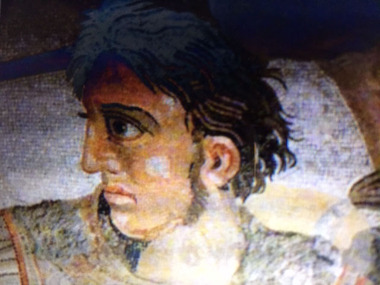 The effigy of the firm yet placid face with the perfect features, the aquiline nose and the golden hair flowing defiantly in the wind, or that more belligerent image of the young mounted warrior chasing after a panicked Persian king Darius on the run, has been captivating the imagination of artists from the sculptors of the Roman times to Andy Warhol , Oliver Stone and of course the Internet.
The effigy of the firm yet placid face with the perfect features, the aquiline nose and the golden hair flowing defiantly in the wind, or that more belligerent image of the young mounted warrior chasing after a panicked Persian king Darius on the run, has been captivating the imagination of artists from the sculptors of the Roman times to Andy Warhol , Oliver Stone and of course the Internet.
Alexander's physique, life and legacy create a unique historical figure on which artists can embroider at their pleasure, making him one of the most of the sought-after subjects for portraiture. He embodies the ideal sitter as set by the greatest literary portraitist of all times, Plutarch, who in 75 A.D. wrote in his Lives
Therefore as portrait-painters are more exact in the lines and features of the face, in which the character is seen...so I must be allowed to give my more particular attention to the marks and indications of the souls of men, and while I endeavor by these to portray their lives, may be free to leave more weighty matters and great battles to be treated by others.
In our lesser mythological yet giddy 21st-century-world of high-speed Internet connections and ever expanding social media platforms, legends, as traditionally conceived, tend to get debunked. Yet at the same time a person's image can travel at breakneck speed and appear on a computer screen halfway across the globe where it will be scrutinized or admired by the eyes of complete strangers. One could argue, in reference to Antiquity, that such time travel was only reserved to the Gods....
Never before was the proliferation of portraits so abundant but also so crucial in the forming of opinion of us by others
says Dennis Koutoudis a LinkedIn profile makeover portraitist.
It is this awareness of being constantly under scruple of third parties that makes portraiture one of the most distinctive cultural features of the early 21st Century.
Ever since the beginnings of time, man has been obsessed with himself. This is why he has felt the urge to leave his mark for posterity. He has achieved this in the form of monuments, writings, and works of art.
The most obvious art form to serve this end is the art portraiture is the portrait.
Thus the primitive man would dip his hands in colored substances and then apply them to the walls of his cave leaving his fingermarks as a relic of his identity (interestingly enough, fingerprints still today constitute the main recognition factor of one's identity).
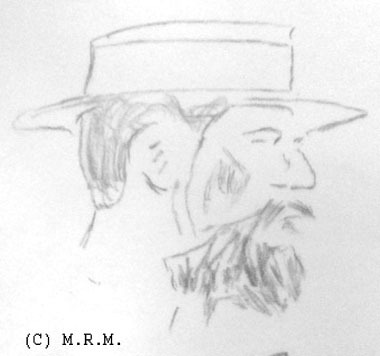
A portrait is the record of a person as perceived by another (with the exception of self-portraits where the artist depicts himself). Portraiture is therefore the art of impersonating a distinctive human being.
Whether the person appears on a passport or an identity card picture or on the cover of a glossy magazine, on the canvass of a painter or chiseled out of marble in a sculptor's studio, even on stamps or coins (if the person is of great political importance) portraits are more than ever omnipresent in today's society.
The greatest moments in the history of portraiture are those when the personality of the artist can most completely comprehend and translate into brushstrokes that of his sitter's. In a portrait, the personality of the sitter is of primary importance. It may not be equally apparent that the personality of the painter is just as significant and that the character of the relationship between them is perhaps the most significant of all. It is this 'chemistry' that produces magic
The painter has to depict the personage's status, history and above all his most elusive yet exciting aspect : the sitter's personality. In fact it is here that the artist interferes with his reading, interpretation and delivery of the person's soul.
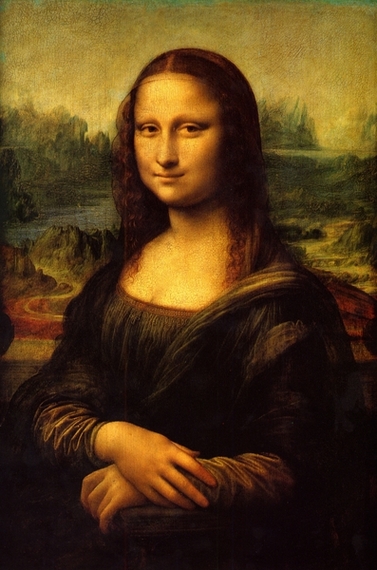 It is therefore not surprising that the world's most famous painting is a portrait. That of a woman. No other painting in history has managed to bring out so strongly the enigmatic and the elusive qualities of the personality of the sitter. A mysterious-like, hard-to-read gaze, that intrigues others, a trait most modern-day celebrity seekers refer to as the "je ne sais quoi". We're talking about the Mona Lisa as depicted by Leonardo da Vinci, the absolute synonym of portrait painting.
It is therefore not surprising that the world's most famous painting is a portrait. That of a woman. No other painting in history has managed to bring out so strongly the enigmatic and the elusive qualities of the personality of the sitter. A mysterious-like, hard-to-read gaze, that intrigues others, a trait most modern-day celebrity seekers refer to as the "je ne sais quoi". We're talking about the Mona Lisa as depicted by Leonardo da Vinci, the absolute synonym of portrait painting.
Although portraiture's main objective is the identification of the sitter, what makes the Mona Lisa unique is that the identity of the sitter, Lisa Giocondo, is considered of secondary importance as it has been coated over the years by layers of myth, stories, songs, tales of actual theft and supposed forging of the artwork itself. During the Summer of 2003, while on tour across Europe, I was surprised to see the cover of Dan Brown's just published book "The Da Vinci Code," lying on tables of cafes printed in all sorts languages. Four hundred years later, Mona Lisa's reference was still a guarantee for a best seller while the 'lady with the mystic smile' carried on exuding her magic.
Another example of an immensely successful portrait artist closer to our times and aesthetics is the American-born John Singer Sargent. having started a successful career in Paris moved to London to immortalize the society.
First and foremost in his choice of subjects: For millennia- portraiture was the privilege of kings, nobles, mythological heroes and saints. Portraiture underwent its first democratization with the advent of the French Revolution that brought about the dominance of the bourgeoisie "the Upper Middle class".
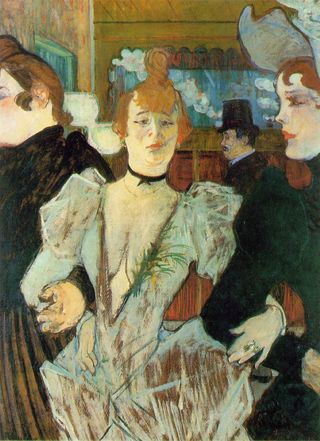 Sargent revolutionized this change even further by including in his list of famous sitters composers, writers and, what was considered taboo, the protrayal of stage artists. Portraits of actors, opera singers and dancers proliferated during the 18th and 19th centuries but these artists were mostly depicted performing a stage character for which they were known to the public Their portraits were considered tributes to their histrionic art. Off-stage representations of the 'real' person or human being behind the role, were generally avoided as stage artists were considered persons of loose morals and any risk of a portraitist becoming openly associated with this crowd, could estrange the upper-crust London patrons, far more conservative than their libertine Parisian counterparts. But even in Paris, where artists of the magnitude of Toulouse Lautrek depicted actors and cabaret dancers more freely, the world of show-business was still considered belonging to the 'wrong side of the tracks'. Artists therefore chose to heighten in their portrayal the grim nature, either in its lusty-erotic or alcoholic-depressive , by which their subjects were associated.
Sargent revolutionized this change even further by including in his list of famous sitters composers, writers and, what was considered taboo, the protrayal of stage artists. Portraits of actors, opera singers and dancers proliferated during the 18th and 19th centuries but these artists were mostly depicted performing a stage character for which they were known to the public Their portraits were considered tributes to their histrionic art. Off-stage representations of the 'real' person or human being behind the role, were generally avoided as stage artists were considered persons of loose morals and any risk of a portraitist becoming openly associated with this crowd, could estrange the upper-crust London patrons, far more conservative than their libertine Parisian counterparts. But even in Paris, where artists of the magnitude of Toulouse Lautrek depicted actors and cabaret dancers more freely, the world of show-business was still considered belonging to the 'wrong side of the tracks'. Artists therefore chose to heighten in their portrayal the grim nature, either in its lusty-erotic or alcoholic-depressive , by which their subjects were associated.
Through his work, Sargent revolutionized the stuffy Victorian London society by imposing new standards of tolerance towards the depiction performers. However, before tackling the borderline characters of the performing arts, he consolidated his fame by " humanizing the technical problem" of a true-to-life portrait, as Henry James described his work; "the artist saw deep into his subject, absorbing it with a quality of light of which the artist sees deeper into his subjects". Managing to bring out on canvass the influence of his sitters' art on their personality traits
Sargent produced a series of portraits of high-profile personalities from the fields of business, music and literature who flocked to sit for him in order to become immortalized by his brushstrokes.
John Singer Sargent, Robert Louis Stevenson, 1887, oil on canvas. Bequest of Charles Phelps and Anna Sinton Taft, Taft Museum of Art, Cincinnati, Ohi
The featuring of two portraits of Robert Louis Stevenson place the Scottish author in a prominent position at the Metropolitan Museum's Sargent exhibition. Stevenson, whose lasting association with mystery, buried treasures, piracy, and intrigue still fascinates readers all over the world, was also a close friend of Sargent. His Strange Case of Dr. Jekyll and Mr. Hyde is the tale of a respectable doctor turning into a murderous monster against his own will. Stevenson used the suspense story as a vehicle to launch a severe criticism of his puritan society. Adopting the Victorian concept that all humans suffered from an inner conflict and possessed an evil side to them, the author accused of hypocrisy the social decorum of his times which demanded from others an all-virtuous (and therefore non existent) character.
Sargent would also adopt this reaction to society and would promote stressing the importance of Stevenson's true character by depicting him in the comfort of his own living room.
Lynne Ambrosini, PhD, Director of Collections and Exhibitions and Curator of European Art, Taft Museum of Art explains:
A masterpiece of informal portraiture, Sargent's enchantingly candid image is often requested for exhibitions in other museums. Painting his sitter at close range in a casual pose constituted a deliberate departure from the formal grandeur and aristocratic poses that Sargent purveyed in his better-known commissioned portraits. Deft touches of impasto represent light striking the wicker chair, tufted floor covering, Stevenson's thoughtful face, and especially his long aesthete's fingers, which became a shorthand for sensitivity and artistic temperament.
A 20th century equivalent of Robert Louis Stevenson would be Alfred Hitchkock, characterized by his comical physique humorous silhouette which became his trademark. How would one handle today, in the world of the Internet, a portrait of John Grisham or George Lucas? Mr Koutoudis explains:
For major celebrities to approach you within the content of Social Media and especially for a LinkedIn profile makeover they must have a special target in mind (some need to promote a specific aspect of their career or of their personality). One has to meet their demands for showcasing in the most professional way since we are talking about the largest network of professionals in the world.
It would be impossible to tackle on such multifaceted personalities without having spent the necessary time to become familiarized with them and also understand their social media needs in order to apply the above said to social media
Such proliferating creators are very hard to be depicted with a couple of brushstrokes. Celebrities usually give the portraitist directions on the desired results of the effect of the picture.
In the case of this portrait we have to keep in mind that Sargent and Stevenson were friends. Instead of hypothetically analyzing, it would be fascinating if one were able to witness the conversation between these two geniuses. This would certainly shed some light on the slightly ironical smile with which Sargent endowed an author widely known for dark mystery and adventure.
Acknowledged as the leading actress of the Belle Epoque period, Eleonora Duse performed exclusively in her native Italian tongue. Turning this limitation to her own advantage she developed the gift of making her international audiences emotionally understand the context of her soliloquies without speaking a word of Italian. This resulted to a long international career, with sold-out houses around the world and several dedications of major theatrical roles by their authors.
In a yet another Victorian approach, Sargent, instead of portraying the actress in one of her leading roles- in costume and full regalia- took the risk of displaying her true personality on canvass. for Duse was the first modern actress as . Unlike her formidable colleagues Sarah Bernhardt and Ellen Terry (whom Sargent decided to paint as Lady Macbeth), who made careers out of declamation and over-dramatization, Duse's delivery, heralding the revolutionary discovery by Dr. Sigmund Freud of the other self within us, was more esoteric, psychological and natural. She imposed the interpretation her roles role as if playing a 'real' person, with all the psychological baggage that came along.....In this way she led the foundations of modern and American theater. In order to heighten these attributes Sargent, instead of creating a recognizable background in his painting, has set her portrait against a vortex of wide and wild brushstrokes. Mr. Koutoudis points out:
Just like in the case of the Mona Lisa where Da Vinci further enhances the enigmatic side of his sitter by painting a bizarre- somewhat otherworldly- background landscape, the background in such a presentation is equally important in order to enhance the accents that one wishes to stress. Depending on the need, the background image can add drama in the case of a performer, or inspire a sense of stability or confidence in an executive or a politician, or even awaken/evoke a sense of taste in the case of a culinary specialist. The sitter is the subject but the background is his object. Sargent with Duse the background.....is more psychological, Stevenson is more disturbed as if referring to the nature of his work. Sargent produces using two brushtrokes the quintessential portraits in an unparalleld way. This perfection leaves us LinkedIn portraitists with an open question: What if the leading actress in the English language came to seek our advice? -I'm obviously referring to Vanessa Redgrave. Sargent would be an inspiration to us all.
Selecting Duse as a sitter and showing her under this light, Sargent was no longer portraying an actress but one of the flag-bearers of Freud's disturbing theory: "The mind is like an iceberg, it floats with one-seventh of its belly above water". Sargent was trying to seize and interpret this subconscious energy that captivated playwrights of the magnitude of D annuzio, Sardou and even Erik Ibsen. By seeing this extraordinary performer through the eyes of these geniuses Sargent made the portrait of performing artists off stage socially acceptable thus paving the way for Cecil Beaton, Richard Avedon, Andy Warhol and of course the Internet.
What makes this portrait even more extraordinary is that it is the product of a sitting that lasted exactly 55 minutes. That was the time the great diva had to spare during her London trip and at the end this time frame she allegedly rose from her seating and walked away.. She is also supposed to have been in an equal hurry when visiting Thomas Edison's studio in New Jersey, in order to have her voice immortalized on the great inventor's phonograph.......
Sargent's portraiture of London society was addressed to a large yet very selected public. We have already said that Social Media is a very broad universe and that every network has a different target.
This is especially true with LinkedIn is a more matter-of-fact approach where any references to personality are strictly linked to the craft of the subject. The main difference is that is destined to reach a tenfold audience
According to statistics by "Internet Users," the most reliable website showcasing Internet data, the number of people using the Internet is expanding at the unimaginable speed of ten new users per second! As we speak the number of users has reached the staggering figure of 3,179,048,620. In fact, today, 40% of the population of the planet actively uses the Internet ,as opposed to less than 1% in 1995
Mr. Koutoudis concludes
The 1995 figures that seem meager by 2015 standards, would be far beyond any figure Sargent's imagination could grasp in 1915. This brings forth the big question of 'targeted audiences'. Sargent might have been a superstar portraitist yet, unlike his Parisian counterpart of Toulouse Lautrek, who created advertising posters of high artistic quality, his works were not destined for mass appeal on such a scale. Sargent's mission was not to create portraits that would turn his subjects famous but to portray already famous sitters, filtering their personality through his own personal flair . In a rather philosophical approach he deals with fame as a case study. It is as if he undertakes to discover, through his art, the ingredients that responsible for generating his sitters' fame. The current Sargent exhibition at the Metropolitan Museum is a wonderful opportunity to discover the artist's journey into the realm of celebrity.
A LinkedIn portraitist's mission on the other hand is to attract Internet traffic on a person who is not necessarily famous. It is more of a promotional tool where the creator's personal touch limits itself to what makes a portrait more appealing to 365.000.000 LinkedIn users or a selected category of them.
In fact the main difference between Sargent's portraiture and a LinkedIn profile makeover is that while Sargent's (or any other great artist's) painting is an end to itself, a LinkedIn portrait is a stepping stone into one's career and professional success. It is this motivation that drives millions of people around the globe into trying to showcase their profiles in their best light only a century after Sargent led the way
.
The Sargent exhibition, until October 4th at the Metropolitan Museum of Art, New York.

